Do you have a question about the Panasonic TX-43MX650B and is the answer not in the manual?
Crucial instructions for safe installation and operation.
Information on power connection and safety precautions.
Explains symbols and markings on the product for safety.
Information regarding the safety of Class 1 laser products.
Precautions to prevent TV from falling and causing injury.
Guidelines and warnings for securely mounting the TV on a wall.
Instructions for cleaning the TV's display, cabinet, and pedestal.
Guidance on cleaning the mains plug.
Step-by-step guide for assembling the TV pedestal.
Instructions on how to detach the TV stand from the television.
Details regarding VESA mounting hole specifications on the TV's rear.
Information on screw depth and diameter for wall bracket installation.
Lists all accessories provided with the TV.
Highlights the main features and capabilities of the TV.
Details on Ultra HD (4K) resolution and HDR/HLG technology.
Information about Dolby Vision technology for improved visual experience.
Steps for safely connecting the TV's power cord to the outlet.
How to switch between different input sources for connected devices.
Adjusting volume levels and changing TV channels using the remote.
Steps for installing batteries into the remote control.
Instructions for pairing the remote control with the TV for wireless operation.
Selecting the initial language for the TV setup.
Choosing the country or region for TV setup.
Proceeding through the initial TV setup wizard.
Searching for and pairing wireless accessories like remotes.
Option to transfer settings from a smartphone or skip.
Steps for connecting the TV to a wired or wireless network.
Reviewing and accepting network privacy policies.
Guidance on signing into a Google account for services and app access.
Agreeing to Google's terms of service.
Configuring Google services and privacy settings.
Setting a 4-digit PIN for security and access control.
Choosing between Home or Store mode for TV operation.
Selecting the tuner type (Antenna, Cable, Satellite) for channel scanning.
Scanning for digital terrestrial and analogue broadcasts.
Scanning for digital and analogue cable channels.
Setting up satellite reception and scanning channels.
Selecting satellite installation mode for channel setup.
Accessing and navigating the menu options in Live TV mode.
Managing channels, including programme guide and import/export features.
Setting the TV to automatically turn off or turn off the screen.
Configuring settings for automatic TV turn-off and sleep mode.
Customizing audio output and subtitle display preferences.
Configuring HbbTV services and Freeview Play platform settings.
Setting up and managing wired and wireless network connections.
Information on wired network connection status and proxy settings.
Performing channel scans and selecting input sources for TV.
Performing channel scans for Antenna input.
Performing channel scans for Cable input.
Setting up satellite reception and scanning channels.
Selecting satellite installation mode for channel setup.
Signing into and managing Google accounts for TV services.
Managing installed applications, including opening, uninstalling, and permissions.
Viewing device details, checking for updates, and performing a factory reset.
Checking system updates and viewing device information.
Resetting the TV to its original factory default settings.
Setting or automatically updating the TV's date and time.
Preventing access to input sources and changing the TV PIN.
Managing app storage locations and viewing recently opened apps.
Configuring settings for audio types, captions, and visual impairment.
Setting power on/off timers and sleep timers for the TV.
Selecting predefined picture modes and Dolby Vision specific options.
Adjusting advanced video settings like noise reduction and colour enhancement.
Fine-tuning contrast, film mode, and colour settings.
Optimizing picture settings for gaming and PC input.
Selecting preset sound modes for different audio experiences.
Adjusting volume, balance, surround, and Dolby processing.
Enabling immersive audio technologies for enhanced sound.
Viewing storage capacity and managing connected USB devices.
Configuring USB storage devices and safely ejecting them.
Customizing the TV's Home Screen layout and content.
Setting up and using Google Assistant and Chromecast features.
Configuring energy-saving features and managing location services.
Configuring settings for audio types, captions, and visual impairment.
Pairing and managing Bluetooth devices like remotes and game controllers.
Editing, sorting, and managing the TV's channel list.
Accessing and navigating the Electronic Programme Guide (EPG).
Connecting the TV to the internet using an Ethernet cable.
Connecting the TV to the internet using a wireless LAN.
Basic controls for playing media files, including pause, seek, and slideshows.
Accessing playback options for media files.
Connecting USB devices and enabling automatic media playback.
Controlling connected HDMI devices using the TV remote via CEC.
Managing CEC settings and using eARC for audio return.
Mirroring device screens and casting app content to the TV wirelessly.
Understanding and using HbbTV services for interactive content.
Accessing catch-up TV and on-demand services via Freeview Play.
Managing automatic channel searches and updating TV software.
Step-by-step solutions for frequent problems like no power or remote issues.
Table detailing supported resolutions and refresh rates for HDMI inputs.
Details on supported image formats and their resolutions.
Supported subtitle codecs for internal media and parsers for external files.
List of supported subtitle codecs for internal media files.
List of supported subtitle parsers for external subtitle files.
Details on wireless LAN frequencies, power, and country-specific regulations.
Key information regarding DVB, IPTV, and service provider dependencies.
Details on licensing for HDMI, Dolby, Google, DTS, and Bluetooth technologies.
Guidelines for environmentally sound disposal of electronic products and batteries.
Statements of compliance with EU directives and UK regulations.
Contact details for customer service, product support, and accessory orders.
Detailed instructions for safely connecting the TV to the mains power supply.
Crucial instructions for safe installation and operation.
Information on power connection and safety precautions.
Explains symbols and markings on the product for safety.
Information regarding the safety of Class 1 laser products.
Precautions to prevent TV from falling and causing injury.
Guidelines and warnings for securely mounting the TV on a wall.
Instructions for cleaning the TV's display, cabinet, and pedestal.
Guidance on cleaning the mains plug.
Step-by-step guide for assembling the TV pedestal.
Instructions on how to detach the TV stand from the television.
Details regarding VESA mounting hole specifications on the TV's rear.
Information on screw depth and diameter for wall bracket installation.
Lists all accessories provided with the TV.
Highlights the main features and capabilities of the TV.
Details on Ultra HD (4K) resolution and HDR/HLG technology.
Information about Dolby Vision technology for improved visual experience.
Steps for safely connecting the TV's power cord to the outlet.
How to switch between different input sources for connected devices.
Adjusting volume levels and changing TV channels using the remote.
Steps for installing batteries into the remote control.
Instructions for pairing the remote control with the TV for wireless operation.
Selecting the initial language for the TV setup.
Choosing the country or region for TV setup.
Proceeding through the initial TV setup wizard.
Searching for and pairing wireless accessories like remotes.
Option to transfer settings from a smartphone or skip.
Steps for connecting the TV to a wired or wireless network.
Reviewing and accepting network privacy policies.
Guidance on signing into a Google account for services and app access.
Agreeing to Google's terms of service.
Configuring Google services and privacy settings.
Setting a 4-digit PIN for security and access control.
Choosing between Home or Store mode for TV operation.
Selecting the tuner type (Antenna, Cable, Satellite) for channel scanning.
Scanning for digital terrestrial and analogue broadcasts.
Scanning for digital and analogue cable channels.
Setting up satellite reception and scanning channels.
Selecting satellite installation mode for channel setup.
Accessing and navigating the menu options in Live TV mode.
Managing channels, including programme guide and import/export features.
Setting the TV to automatically turn off or turn off the screen.
Configuring settings for automatic TV turn-off and sleep mode.
Customizing audio output and subtitle display preferences.
Configuring HbbTV services and Freeview Play platform settings.
Setting up and managing wired and wireless network connections.
Information on wired network connection status and proxy settings.
Performing channel scans and selecting input sources for TV.
Performing channel scans for Antenna input.
Performing channel scans for Cable input.
Setting up satellite reception and scanning channels.
Selecting satellite installation mode for channel setup.
Signing into and managing Google accounts for TV services.
Managing installed applications, including opening, uninstalling, and permissions.
Viewing device details, checking for updates, and performing a factory reset.
Checking system updates and viewing device information.
Resetting the TV to its original factory default settings.
Setting or automatically updating the TV's date and time.
Preventing access to input sources and changing the TV PIN.
Managing app storage locations and viewing recently opened apps.
Configuring settings for audio types, captions, and visual impairment.
Setting power on/off timers and sleep timers for the TV.
Selecting predefined picture modes and Dolby Vision specific options.
Adjusting advanced video settings like noise reduction and colour enhancement.
Fine-tuning contrast, film mode, and colour settings.
Optimizing picture settings for gaming and PC input.
Selecting preset sound modes for different audio experiences.
Adjusting volume, balance, surround, and Dolby processing.
Enabling immersive audio technologies for enhanced sound.
Viewing storage capacity and managing connected USB devices.
Configuring USB storage devices and safely ejecting them.
Customizing the TV's Home Screen layout and content.
Setting up and using Google Assistant and Chromecast features.
Configuring energy-saving features and managing location services.
Configuring settings for audio types, captions, and visual impairment.
Pairing and managing Bluetooth devices like remotes and game controllers.
Editing, sorting, and managing the TV's channel list.
Accessing and navigating the Electronic Programme Guide (EPG).
Connecting the TV to the internet using an Ethernet cable.
Connecting the TV to the internet using a wireless LAN.
Basic controls for playing media files, including pause, seek, and slideshows.
Accessing playback options for media files.
Connecting USB devices and enabling automatic media playback.
Controlling connected HDMI devices using the TV remote via CEC.
Managing CEC settings and using eARC for audio return.
Mirroring device screens and casting app content to the TV wirelessly.
Understanding and using HbbTV services for interactive content.
Accessing catch-up TV and on-demand services via Freeview Play.
Managing automatic channel searches and updating TV software.
Step-by-step solutions for frequent problems like no power or remote issues.
Table detailing supported resolutions and refresh rates for HDMI inputs.
Details on supported image formats and their resolutions.
Supported subtitle codecs for internal media and parsers for external files.
List of supported subtitle codecs for internal media files.
List of supported subtitle parsers for external subtitle files.
Details on wireless LAN frequencies, power, and country-specific regulations.
Key information regarding DVB, IPTV, and service provider dependencies.
Details on licensing for HDMI, Dolby, Google, DTS, and Bluetooth technologies.
Guidelines for environmentally sound disposal of electronic products and batteries.
Statements of compliance with EU directives and UK regulations.
Contact details for customer service, product support, and accessory orders.
Detailed instructions for safely connecting the TV to the mains power supply.
| Screen shape | Flat |
|---|---|
| Response time | - ms |
| Display diagonal | 43 \ |
| Display brightness | - cd/m² |
| Display technology | LED |
| Native aspect ratio | 16:9 |
| Display diagonal (metric) | 108 cm |
| Supported graphics resolutions | 3840 x 2160 |
| Motion interpolation technology | - |
| Energy efficiency scale | A to G |
| Power consumption (standby) | 0.5 W |
| Power consumption (typical) | - W |
| Tuner type | Analog & digital |
| Digital signal format system | DVB-C, DVB-S, DVB-S2, DVB-T, DVB-T2 |
| Operating system version | Android V.11 |
| Operating system installed | Android |
| Sound modes | Game, Movie, Music, News, Stadium, Standard, Vivid |
| RMS rated power | 20 W |
| Number of speakers | 2 |
| Stand type | Center stand |
| Product color | Black |
| Panel mounting interface | 100 x 100 mm |
| Video compression formats | HEVC |
| High Dynamic Range (HDR) technology | Dolby Vision, High Dynamic Range 10 (HDR10), Hybrid Log-Gamma (HLG) |
| HDMI ports quantity | 3 |
| USB 2.0 ports quantity | USB 2.0 ports have a data transmission speed of 480 Mbps, and are backwards compatible with USB 1.1 ports. You can connect all kinds of peripheral devices to them. |
| Ethernet LAN (RJ-45) ports | 1 |
| Common interface Plus (CI+) version | 1.4 |
| Package depth | 154 mm |
| Package width | 1085 mm |
| Package height | 725 mm |
| Package weight | 14000 g |
| Stand width | 441 mm |
|---|---|
| Depth (with stand) | 221 mm |
| Width (with stand) | 964 mm |
| Height (with stand) | 614 mm |
| Weight (with stand) | 11000 g |
| Depth (without stand) | 68 mm |
| Height (without stand) | 560 mm |
| Weight (without stand) | 7500 g |
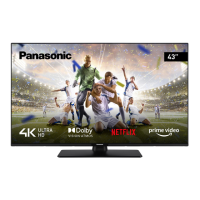



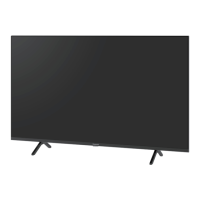

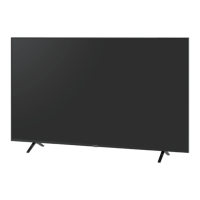

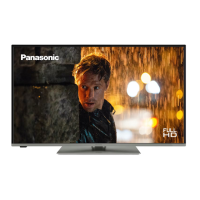
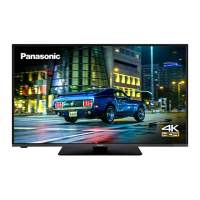
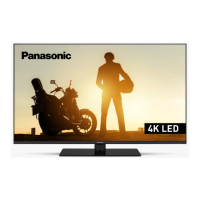
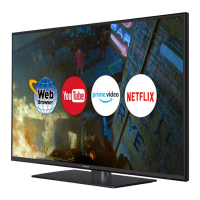
